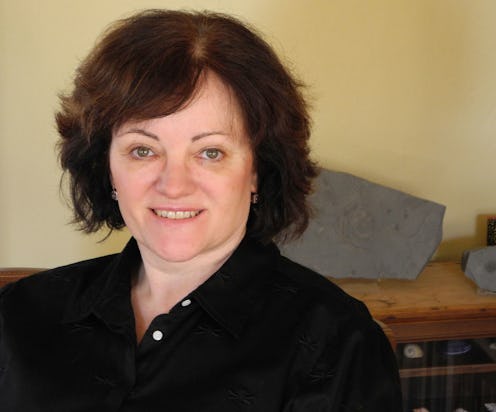Books
Novelist Lori Baker on Glass, Love, and History

Carlotta, the hero of debut novelist Lori Baker's The Glass Ocean (The Penguin Press), was born to love-lorn seafarers whose story she learns slowly and achingly. As facts surface, the past haunts Carlotta, and with the dream-like atmosphere of the novel, the reader is haunted, too. But the setting and the rich characterization of Carlotta's artist father and beautiful mother propelled me through the pages; Baker has a gift for narrating in detail, and the intensity of the love story kept me sucked in.
On the heels of The Glass Ocean's release, Lori Baker answers a few questions for Bustle about her interest in glass art, history, and love stories.
BUSTLE: Tell me about what inspired you to write a modern novel about the Victorian era.
LORI BAKER: This story is largely inspired by the life of the artist Leopold Blaschka and his brother, Rudolf. They were very talented glass artists whose work I saw on display at Harvard and was so in awe of. The Blaschkas created models of flowers and sea creatures out of glass, and the level of detail was really astounding; I was so fascinated by how incredibly complex each figure was. So that's where the character of Leopold [in the book] comes from — from real-life Leopold Blaschka.
Why did you set so much of this at sea?
Well, selfishly, I love the ocean, and always have. So setting it on board a ship allowed me to indulge my love of the sea. And Leopold's job — drawing and making figures of sea creatures — also lets me indulge that interest.
How is historical fiction set in mid-1800s English countryside relevant for today's readers? Who did you write this for?
There is a lot of history and science in this book, but it is also very much a literary work. Any reader who likes history or science or even just a story will enjoy this book. And the love story, too: I think everyone likes a good love story.
What was the research process like for this book? Did you get to travel to where the book is set?
My husband and I spent time in a small village called Robin Hood's Bay, which is on the North Yorkshire coast a few miles south of Whitby, where the novel is set. While there, we had the chance to explore Whitby and the North Yorkshire coast, including the Scaur, which is very rugged and beautiful; we also visited the North York moors. It is an austere place, and I imagine it must have felt very remote during the time when the novel is set (mid-1800s).
What do you personally find fascinating about glass and the artists who work with it? What does it represent and add to a character?
Glass is amazing, gorgeous stuff. I’ve long admired incredible glass artists (Judith Schaechter is a prominent example), and I learned a lot about the medium while writing The Glass Ocean. What first struck me about the Blaschkas’ work was its obsessive detail, how this incredibly detailed, painstaking work added up to these very life-like objects. As I was writing the book, glass began to resonate with me in a more metaphorical way — it was the perfect metaphor for Clotilde’s brittleness, for the fragility of the family’s situation, its hollowness, and then for Carlotta’s resilience as well — because glass has this fascinating quality of being fragile and resilient at the same time. But there is more to it than that. I have thought of Leo’s work as a sort of an effort to ‘stop time’ — the living creatures he strives to re-create in glass are delicate, ephemeral, they won’t last if he doesn’t find a way to represent them. I think he’s trying to do the same thing in his relationship with Clotilde — find a way to stop time, to stop the marriage from dissolving, to stop her from disappearing. Unfortunately the way he chooses to do it drives her away. For me, glass in this novel encapsulates all these things.